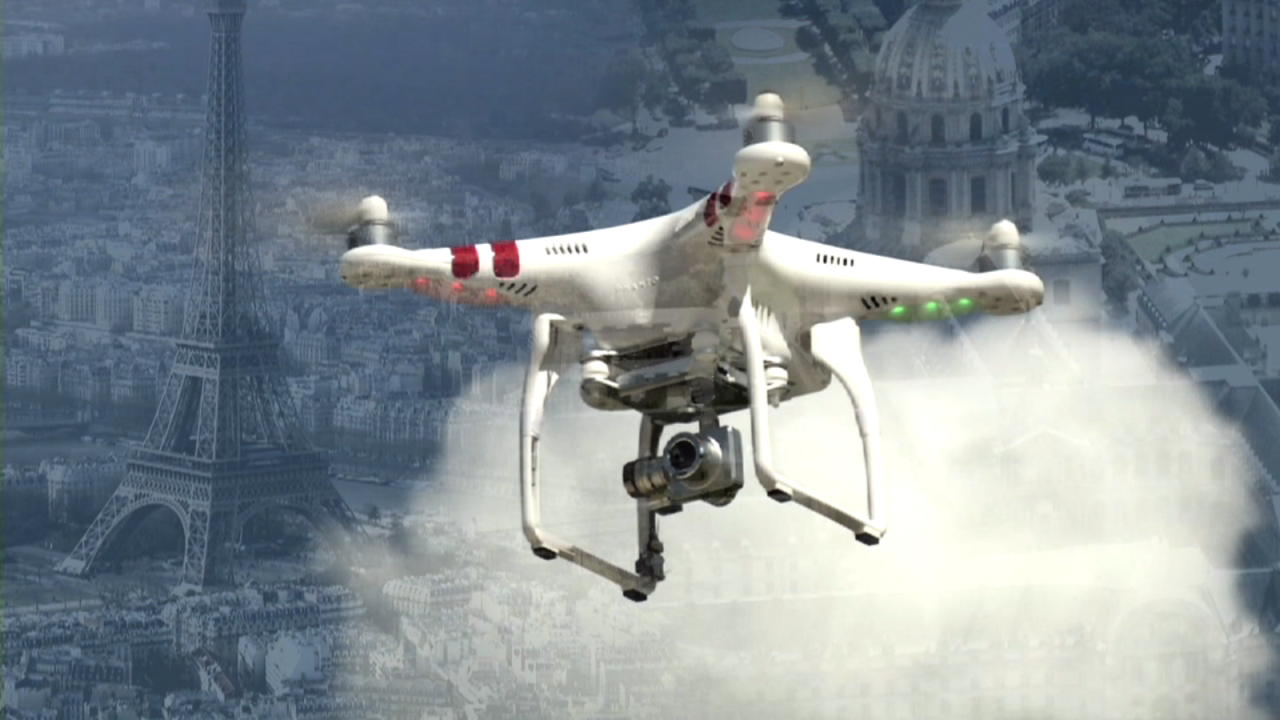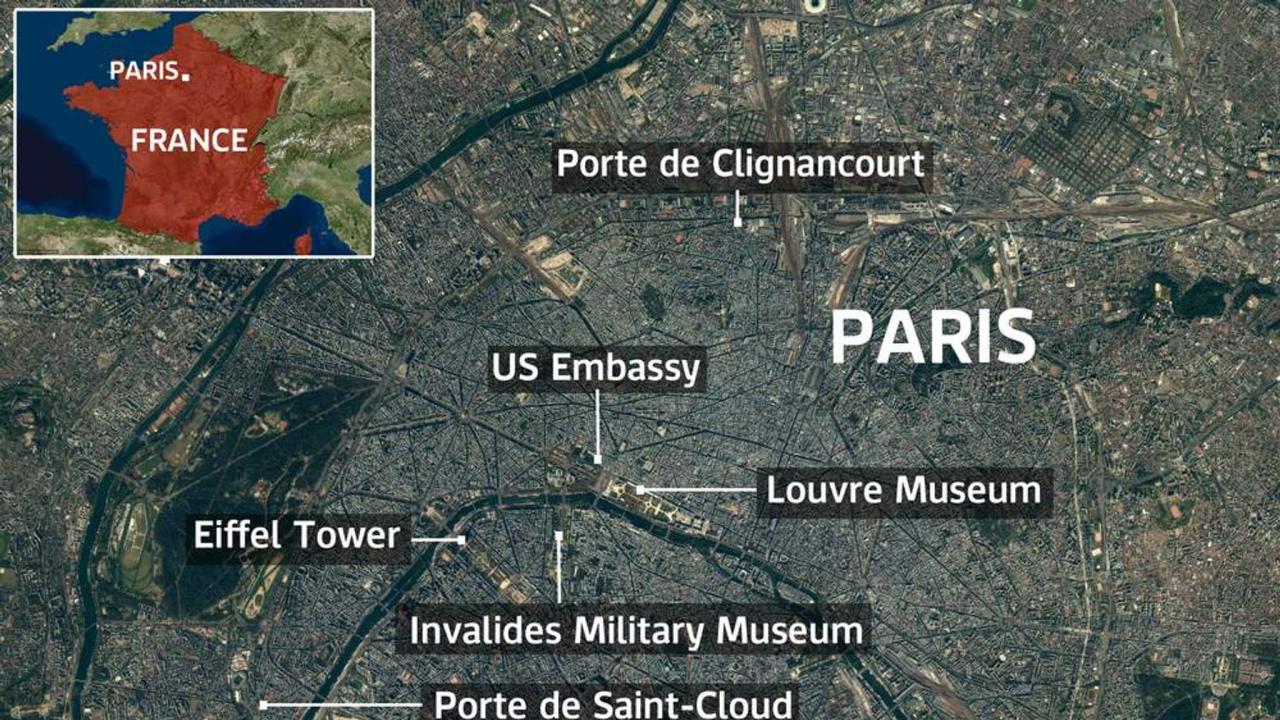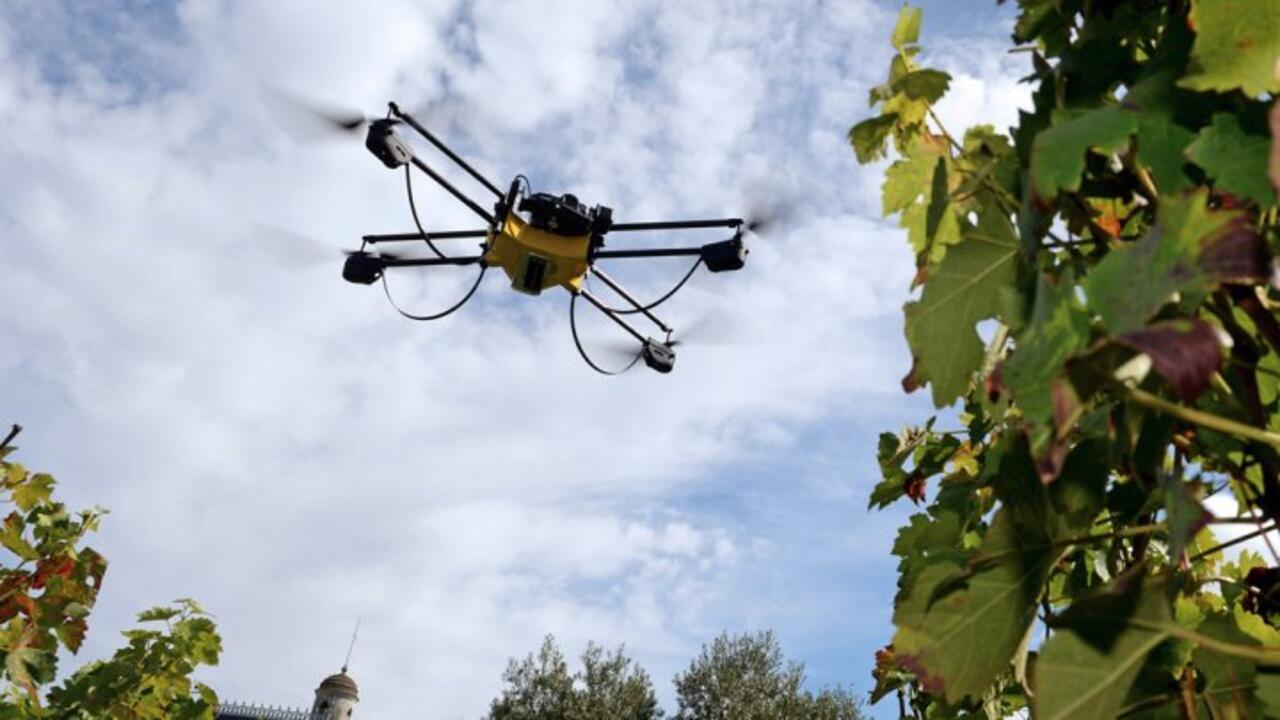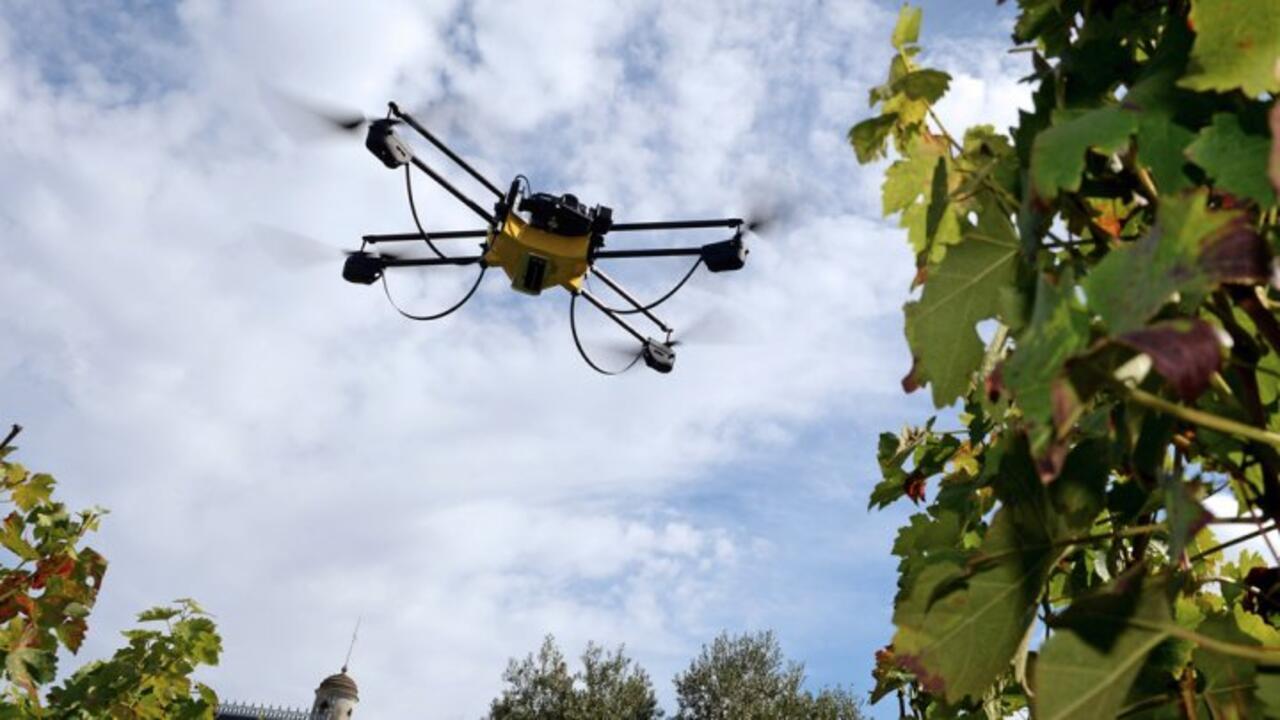Mystery Drone Paris: Imagine the Parisian skyline, iconic landmarks silhouetted against the twilight, suddenly disrupted by the silent, enigmatic flight of unidentified drones. These unmanned aerial vehicles, appearing sporadically across the city, have sparked a wave of speculation, ranging from harmless recreational activity to potential security threats. This exploration delves into the mystery, examining reported sightings, potential explanations, and the impact on Parisian society.
Reports detail varying drone characteristics – size, shape, color, and lighting – observed across diverse Parisian locations. The timeline of sightings reveals potential patterns, or lack thereof, fueling the intrigue. We’ll investigate possible explanations, from innocent commercial use to more sinister scenarios, examining the potential for disruption, public reaction, and the security implications for this captivating mystery.
The Phenomenon: Mystery Drone Paris

The emergence of mysterious drones over Paris in [Insert Year, if known, otherwise remove this phrase] sparked considerable public interest and concern. These unmanned aerial vehicles, appearing unexpectedly and often without clear purpose, generated numerous reports from citizens and raised questions about their origin, intent, and potential security implications. The events, while seemingly isolated incidents, collectively paint a picture of an unusual and unexplained aerial activity within the city.
Drone Characteristics
Reports describe the drones as varying in size, though most accounts suggest they are relatively small, possibly no larger than a large bird. Descriptions of shape are inconsistent, ranging from boxy to cylindrical, reflecting perhaps the varied angles and distances of observation. Color is another point of inconsistency, with some witnesses describing them as dark, almost black, while others mention a dull metallic grey or even a faint, indistinct glow.
The presence of lights is a more consistent feature; many reports note flashing or steady lights, typically white or red, though some accounts mention other colors. The lack of consistent descriptions could be attributed to the speed of the drones, the distance at which they were observed, and the varying lighting conditions.
Drone Sightings in Paris
The following table summarizes reported drone sightings in Paris. Note that the accuracy of some details might be limited due to the nature of eyewitness accounts. Further investigation would be necessary to verify each reported incident.
| Date | Time | Location | Description of Drone Activity |
|---|---|---|---|
| [Date 1] | [Time 1] | [Specific Location 1, e.g., Eiffel Tower vicinity] | [Description 1, e.g., Single drone hovering silently for approximately 10 minutes.] |
| [Date 2] | [Time 2] | [Specific Location 2, e.g., near the Louvre Museum] | [Description 2, e.g., Two drones observed flying in formation at high speed.] |
| [Date 3] | [Time 3] | [Specific Location 3, e.g., over the Seine River] | [Description 3, e.g., A single drone with bright flashing lights, erratic flight pattern.] |
| [Date 4] | [Time 4] | [Specific Location 4, e.g., near the Arc de Triomphe] | [Description 4, e.g., Multiple drones, silent, moving slowly and methodically.] |
Timeline of Sightings
A clear pattern in the sightings is difficult to establish from the available information. The reported events appear sporadic, with no immediately obvious connection between the dates, times, or locations of the sightings. Inconsistencies in the descriptions of the drones further complicate the analysis. Further investigation and data collection are needed to identify potential trends or correlations.
For example, analyzing weather patterns during the reported sightings might reveal a connection. Similarly, comparing the locations to potential points of interest or infrastructure might reveal a pattern that is currently not obvious.
Potential Explanations for the Drones

The mysterious Paris drone sightings sparked much speculation. Several plausible, albeit not mutually exclusive, explanations exist for their appearance, ranging from innocent recreational activities to more sinister possibilities. Let’s explore some of the key hypotheses.
Recreational Drone Use
The increasing affordability and accessibility of drones have made them popular for recreational purposes. Many individuals enjoy using drones for aerial photography and videography, capturing stunning views of cities like Paris. The drones observed could simply have been hobbyists taking advantage of the city’s iconic landmarks as a backdrop for their videos or photos. This explanation gains credibility considering the numerous drone-related social media posts and online communities dedicated to aerial photography.
The sheer number of drones visible in some reports, however, makes this a less likely explanation for all the sightings.
That whole mystery drone thing in Paris got me thinking about drone safety. Incidents like the orlando drone show accident highlight the potential for things to go wrong, even with seemingly well-planned shows. So, yeah, the Paris drones are intriguing, but it’s a good reminder that we need better regulations and safety protocols for all drone operations.
Commercial Photography and Videography
Professional photographers and videographers frequently employ drones to capture breathtaking footage for various projects. Real estate companies, for example, might use drones to showcase properties from unique angles, while filmmakers could use them to create dynamic cinematic shots. The size and apparent sophistication of some of the drones sighted suggest they might have been high-end models, commonly used by professionals in the film or advertising industry.
However, without confirmation of permits or contracts, this remains speculative.
Illicit Activities
A more concerning possibility is the use of drones for illicit activities. Surveillance is a prime example; drones equipped with high-resolution cameras could be used to gather intelligence, potentially for criminal or espionage purposes. Similarly, drones could be utilized for smuggling small quantities of contraband, exploiting the relative ease of navigating airspace undetected. The coordinated nature of some of the drone flights suggests a degree of planning and organization, raising concerns about a potential criminal enterprise.
This scenario would require a deeper investigation involving law enforcement and intelligence agencies.
That whole mystery drone thing in Paris? It’s got people buzzing. Maybe it’s related to the recent increase in incidents, like those described in this article about drone crashes in Paris. Understanding those crashes might shed light on the mystery drone, giving us clues about its purpose and origin. It’s all pretty intriguing, right?
Technological Malfunctions
Finally, it’s crucial to consider the possibility of technological malfunctions. A swarm of drones might appear coordinated due to a software glitch or a malfunction in their control systems, causing them to operate autonomously and unexpectedly. Similarly, other devices, such as weather balloons or experimental aircraft, might have been mistakenly identified as drones. This explanation, while plausible for some isolated incidents, is less likely to account for the consistent and seemingly deliberate patterns observed in the Paris drone events.
Impact on Parisian Society and Infrastructure

The mysterious drone swarms over Paris in 2020 caused significant disruption, sparking debate about air safety, public reaction, security vulnerabilities, and the impact on the city’s image as a global tourist destination. The incident highlighted the vulnerability of major cities to unforeseen technological threats and the potential for widespread panic and economic consequences.
The unpredictable nature of the drone activity presented several challenges for Parisian authorities and citizens alike. The lack of clear identification and control over the drones led to various cascading effects, impacting multiple facets of Parisian life.
Air Traffic Disruptions
The appearance of numerous unidentified drones in Parisian airspace posed a serious threat to air traffic. The potential for collisions with aircraft, particularly helicopters and smaller planes operating in the city’s airspace, was significant. Even without direct collisions, the drones could have caused delays and diversions, disrupting flight schedules and impacting the efficiency of air travel. Imagine the chaos if a drone swarm had interfered with a major airport’s operations, leading to flight cancellations and passenger inconvenience.
The situation could have easily escalated into a major logistical nightmare, costing airlines and passengers considerable time and money.
Public Reaction to Drone Sightings
Public reaction to the drone sightings was a mixture of fear, fascination, and speculation. While specific news articles and social media posts from that time are difficult to definitively source and verify now, we can reconstruct the likely public sentiment based on similar events.
The unpredictable nature of the sightings likely generated significant anxiety. News reports would likely have highlighted the uncertainty surrounding the drones’ origin and purpose, fueling public concern. Social media would likely have been awash with videos, photos, and speculation, ranging from theories about military exercises to extraterrestrial activity.
- News outlets likely reported on the disruption to daily life, emphasizing the unusual nature of the event and the authorities’ struggle to identify the drones’ source.
- Social media would have featured numerous user-generated videos and images, along with a wide range of speculation and commentary, some informed, some fanciful.
- Public opinion likely shifted from initial curiosity to growing concern as the mystery remained unsolved and the drones continued to appear.
Security Risks Associated with Unidentified Drones
The presence of unidentified drones over Paris raised significant security concerns. The possibility of drones being used for malicious purposes, such as surveillance, targeted attacks, or even the delivery of explosives, was a major worry. The lack of identification and tracking capabilities made it difficult for authorities to assess the potential threat level and respond effectively. This incident serves as a stark reminder of the vulnerability of major cities to such attacks.
Similar incidents elsewhere have shown how easily drones can be weaponized, highlighting the urgent need for robust counter-drone technology and security protocols.
Impact on Tourism and the City’s Image
The drone incidents could have negatively impacted Paris’s image as a safe and secure tourist destination. The uncertainty and potential security risks associated with the drones could have deterred tourists from visiting the city, leading to a decline in tourism revenue. Negative media coverage could have further exacerbated this impact, portraying Paris as a vulnerable and unpredictable city.
The long-term effects on the city’s tourism industry would depend on how effectively the authorities addressed the issue and restored public confidence. A similar situation in another major tourist destination could serve as a cautionary tale, showing the potential economic consequences of such events.
That whole mystery drone thing in Paris got everyone buzzing, right? It makes you wonder about the future of package delivery, especially with companies like Amazon already testing out their drone delivery systems. Check out this list of current amazon drone delivery locations to see how far along they are. Maybe those Parisian drones were just early adopters – or something way more mysterious!
Investigative Approaches and Technological Considerations
Uncovering the source of the mysterious Parisian drone swarms requires a multi-faceted approach, combining advanced technological tools with meticulous investigative techniques. The challenge lies not only in identifying the drones themselves, but also in tracing their operators and understanding their motivations. This necessitates a coordinated effort involving law enforcement, technological experts, and potentially international collaboration.Tracking and identifying the drones presents unique difficulties.
Unlike traditional aircraft, these unmanned aerial vehicles (UAVs) are relatively small, maneuverable, and can operate silently, making visual detection challenging. Moreover, their operators could be located considerable distances away from the drones themselves, complicating efforts to pinpoint their location.
Drone Tracking and Identification Methods
Several methods can be employed to track and identify drones. Visual observation, while limited in range and effectiveness in low-light conditions, can provide initial data points, such as drone type, flight patterns, and potential launch/landing sites. More sophisticated methods include radar systems, which can detect drones based on their radar cross-section, regardless of visibility. These systems, however, might struggle to differentiate between drones and birds or other airborne objects.
Radio frequency (RF) detection is another crucial technique; it focuses on identifying the unique signals emitted by drones during operation, allowing for geolocation and potentially the identification of the specific drone model. Finally, analyzing video footage from security cameras and citizen-submitted videos can provide valuable clues about drone characteristics and flight paths. Sophisticated image recognition software can enhance this process by automatically identifying drones within the footage.
Law Enforcement Investigative Approaches
Law enforcement agencies would likely employ a multi-pronged investigative approach, starting with securing and analyzing any recovered drone wreckage. This would provide crucial information about the drone’s manufacturer, components, and any potential modifications. Investigators would then use the data collected from various tracking methods (visual, radar, RF) to reconstruct the drones’ flight paths and potentially identify launch and landing sites.
This information would be cross-referenced with security camera footage and witness testimonies to build a clearer picture of the events. Further investigation might involve tracing the purchase and registration of similar drones, examining online forums and social media for clues, and employing digital forensics techniques to analyze any data recovered from the drones or associated equipment. International cooperation may be necessary if the operators are based outside of France.
The investigation would also need to consider the possibility of multiple actors or a coordinated effort.
Hypothetical Investigation Plan
A hypothetical investigation plan would involve the following steps: 1) Immediate response and securing of any crash sites; 2) Collection and analysis of physical evidence (drone wreckage, etc.); 3) Deployment of radar and RF detection systems to track active drones; 4) Review of security camera footage and public video submissions; 5) Interviewing witnesses and gathering testimonies; 6) Tracing the purchase and registration of similar drones; 7) Digital forensic analysis of recovered data; 8) Collaboration with international agencies if necessary; 9) Development of suspect profiles and identification; 10) Investigation into motives and potential links to other incidents.
The timeline for each step would depend on the available resources and the complexity of the case.
Improving Drone Detection Technologies
Improvements in drone detection technologies are crucial for preventing future incidents. This includes developing more sophisticated radar systems with enhanced discrimination capabilities to differentiate drones from other airborne objects. Improving RF detection systems to identify and locate drones more accurately, even in congested RF environments, is also critical. The development of AI-powered systems for automated drone identification and tracking within video surveillance footage is also essential.
Furthermore, focusing on the development of counter-drone technologies, such as jamming or net-based capture systems, would offer a proactive approach to neutralizing rogue drones. These improvements require collaborative efforts between governments, technology companies, and researchers. Examples of such advancements include the use of AI-powered systems to analyze audio data to detect the unique sounds of drones and the deployment of more advanced spectral analysis techniques to distinguish drones from other RF sources.
Visual Representations
Visualizing the mystery Paris drones requires considering their reported capabilities and limitations. We can create hypothetical models based on the available (though limited) information, and then map potential flight paths across iconic Parisian landmarks. This exercise helps us understand the logistical and technological challenges involved, regardless of the drones’ actual origin.We can speculate on the drones’ design and flight patterns by considering the reported observations.
This process allows us to explore the possibilities, even if the actual drones differed significantly from our hypothetical models. The following hypothetical models aim to be plausible, based on current drone technology and the reported events.
Hypothetical Drone Designs, Mystery drone paris
Three distinct drone designs could potentially explain the observed characteristics of the mystery drones. These designs represent a range of possibilities, from relatively simple to highly advanced technology. Note that these are purely speculative models.
- Model 1: The “Silent Flyer”: A small, stealthy drone prioritizing silent operation.
- Size: Approximately 1-1.5 meters in wingspan, utilizing advanced, quiet propulsion systems like ducted fans or electric motors with noise-reduction technologies.
- Materials: Primarily carbon fiber composites for lightweight construction and radar absorption materials for stealth.
- Payload: Limited to a small camera and GPS/communication systems, minimizing weight and maximizing flight time.
- Flight Characteristics: Slow, steady flight, prioritizing stealth over speed or maneuverability.
- Model 2: The “Agile Scout”: A more maneuverable drone, prioritizing agility and speed.
- Size: Smaller than Model 1, approximately 0.5-1 meter in wingspan, potentially utilizing multi-rotor technology for superior maneuverability.
- Materials: Lightweight, high-strength materials like carbon fiber and aluminum alloys.
- Payload: Higher payload capacity than Model 1, potentially including more advanced sensors and cameras.
- Flight Characteristics: Fast, agile flight capable of quick turns and changes in altitude. Potentially utilizes advanced flight control systems for precision maneuvering.
- Model 3: The “Persistent Observer”: A larger, long-endurance drone focusing on prolonged surveillance.
- Size: Larger than the previous models, with a wingspan of 2-3 meters or more, utilizing fixed wings for efficient long-range flight.
- Materials: High-strength, lightweight composites designed for endurance flights.
- Payload: Significant payload capacity for extended operation, including high-resolution cameras, sensors, and possibly even small data storage units.
- Flight Characteristics: Slow, steady flight prioritizing endurance. Likely capable of autonomous operation for extended periods.
Possible Drone Flight Path Over the Eiffel Tower
Let’s imagine a flight path for a hypothetical drone (similar to Model 2: The Agile Scout) over the Eiffel Tower. This is a purely speculative example, illustrating potential maneuvers.The drone begins its flight approximately 5 kilometers from the Eiffel Tower at an altitude of 100 meters. It approaches the tower at a speed of 20 meters per second, maintaining a constant altitude.
Once within 1 kilometer of the tower, the drone executes a series of tight turns, circling the tower at a distance of approximately 500 meters, maintaining a constant altitude of 150 meters. The drone then ascends to 300 meters, performing a slow, graceful loop around the tower’s spire before descending back to 100 meters and flying away at a speed of 30 meters per second along a predetermined path.
The entire flight would last approximately 5-7 minutes, depending on the drone’s exact speed and maneuverability. This flight path would allow for comprehensive surveillance of the tower and its immediate surroundings. This example, of course, is just one possibility among many.
Final Thoughts
The mystery surrounding the Paris drones remains unsolved, but our investigation has revealed a complex interplay of potential explanations and significant implications. From the initial reports of strange aerial vehicles to the speculation about their purpose, this case highlights the vulnerability of major cities to unforeseen technological disruptions and the challenges of maintaining security in an increasingly complex airspace. Further investigation, incorporating advanced drone detection technologies and improved collaborative efforts between authorities and citizens, is crucial to unraveling this aerial enigma and preventing future occurrences.
Essential FAQs
What types of drones are suspected?
Reports are inconsistent, describing drones of various sizes and shapes, making definitive identification difficult.
Have any arrests been made?
No arrests related to the drone sightings have been publicly reported.
What is the French government’s response?
The official response has varied, ranging from investigations to public statements emphasizing security concerns.
How could these drones be tracked better?
Improved drone detection technology, including radar systems and AI-powered surveillance, could significantly enhance tracking capabilities.
